Managing Change Requests – This Is How I Do It With Can Do
Change Requests Are Part of Everyday Project Work – In Our Team Just as Much as With Our Clients
In many workshops or...
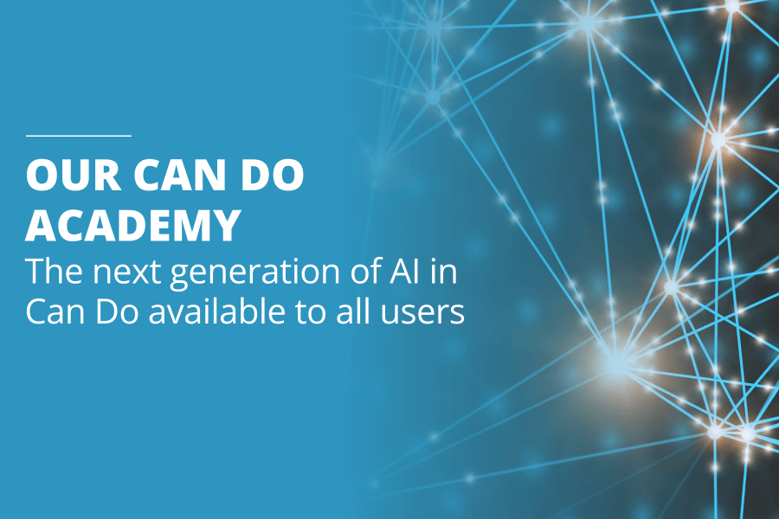
The existing AI, which provides recommendations for action in case of individual overload, is receiving an additional model. This model suggests specific alternative resources. Moreover, the new model is far more trainable than the current AI.
The existing AI that determines action recommendations is a rule-based system with a very limited learning capacity. In contrast, the new AI is fully trainable and falls more into the category of Machine Learning (ML). Specifically, this AI operates on the neuronal network approach and learns from the users.
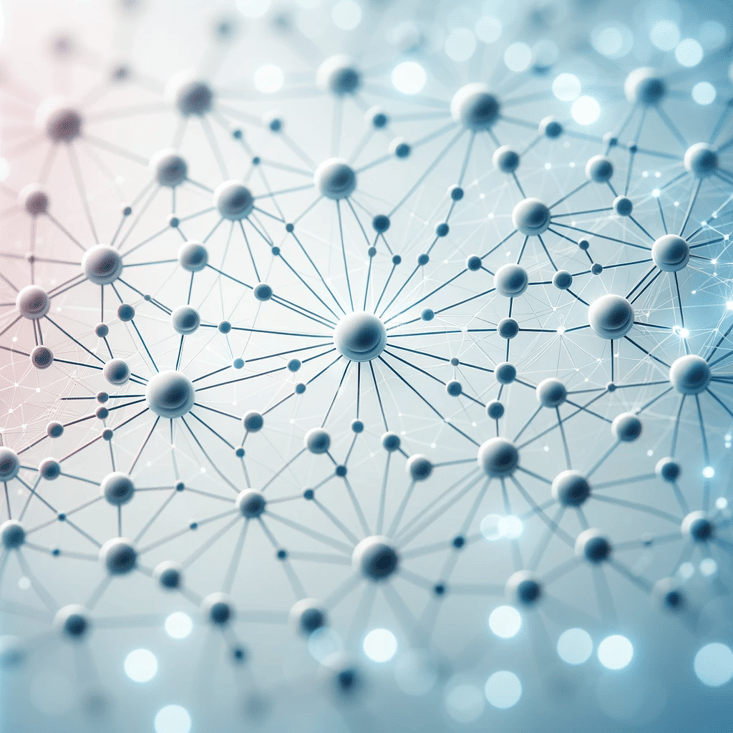
One approach for project managers in the case of an overloaded resource is to assign another person to the task. However, this person must meet various criteria to be considered, such as having sufficient availability and, most importantly, possessing the necessary skills to take over the work from the overloaded individual. While Can Do is also a skill management software, and all resources can have skills, it is possible for project managers to specify which of the many skills an employee should perform when assigning a resource. However, project managers often find this process too cumbersome.
Therefore, Can Do needs to autonomously determine which person can replace another person in the event of an overload.
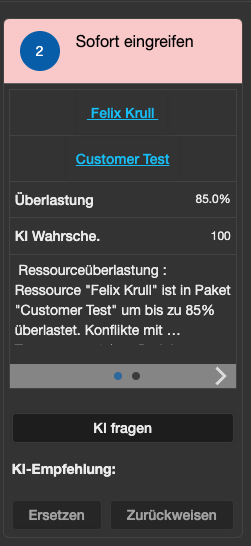
The illustration indicates that the AI has identified two overloads across the entire project, prompting the "old" AI to recommend "immediate intervention". The representation has been completely redesigned and looks like this in its entirety:
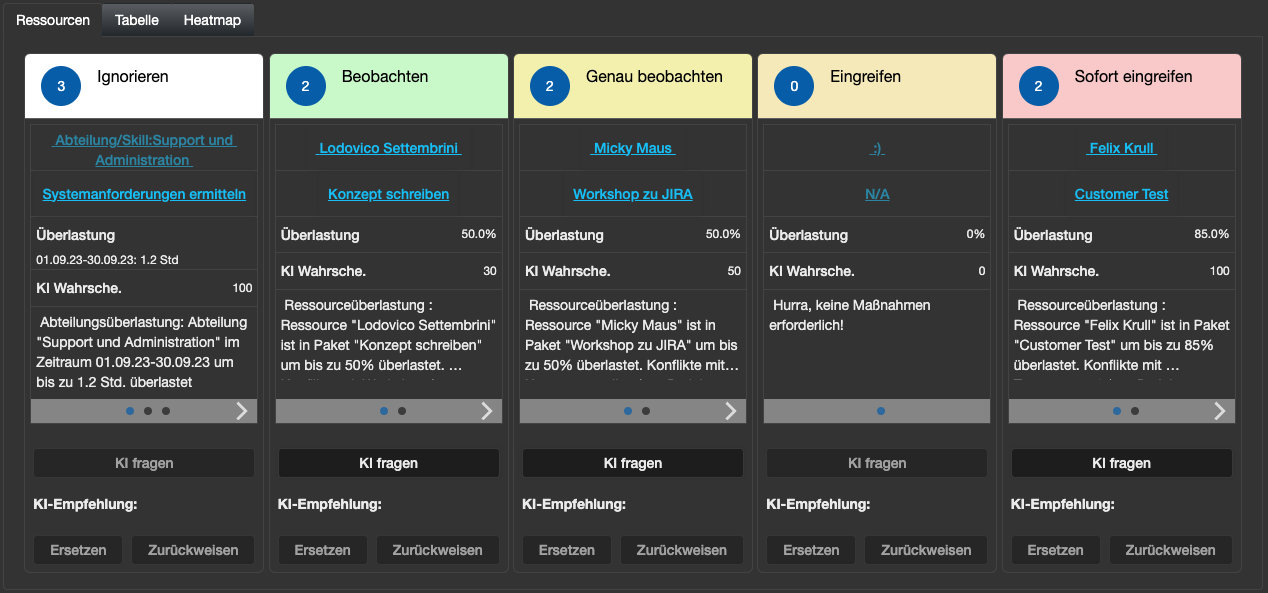
Within the initial layers of the AI, we have already defined preliminary learning models. This is to prevent the AI from considering all resources within a company when searching for alternatives. In installations with, for example, 4,500 users, this would take far too long, and the results would be questionable. Therefore, the AI assumes, for instance, that individuals in the same department may potentially possess similar skills. There are additional assumptions that aid the AI in conducting more targeted searches.
The AI has identified an alternative individual and simulated their availability. This means that if the alternative person is considered and deployed, the risk situation is improved compared to the current scenario. The suggestion is, therefore, an alternative person whom the AI suspects can perform the work and is sufficiently available.
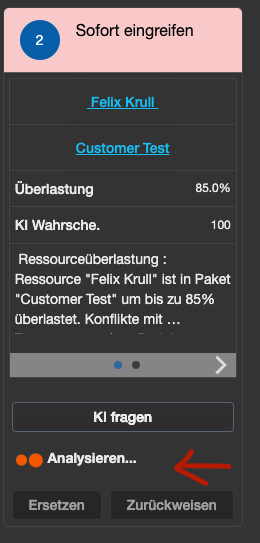
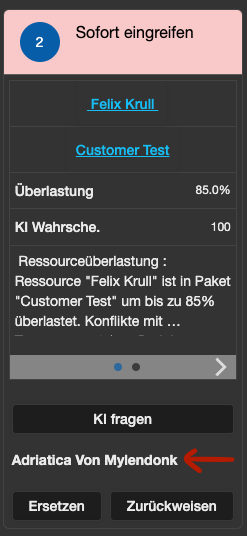
The lower layers in Can Do identify and assess the overload risk, providing a recommendation such as "Intervene". Project planners can then request an alternative for this specific risk. They can choose to accept (replace) this suggestion, allowing the current risk resource in this work package to be replaced with the new resource, taking into account work already completed.
If the project planner rejects the AI's suggestion, another resource is proposed. This resource may be just as suitable but not better. A maximum of 5 resources is suggested. If all suggestions are rejected by the project management, the AI exhausts its options and can no longer assist.
The button labeled 'Ask AI' triggers the new AI: The AI now starts to find alternative individuals and also simulates whether the capacity is sufficient. If a resource is found, it is displayed. Here is the entire process in a short video:
The assessment of whether one person can take over the work of another is best made by people. So, when the project manager accepts or rejects a suggestion, the AI learns from them. Over time, the AI gets to know the individuals in the company better, making increasingly better suggestions.
This list is extremely long, here's just a spontaneous enumeration:
We have now activated and utilized the model for 4 months, both internally and with selected clients. The results are astonishing: within just 2-3 weeks, the alternatives suggested by the neural network are so good that in 80% of cases, the first two suggestions are adopted by project managers or department heads. We had anticipated a significantly longer training period.
The time savings for users are deemed substantial, with some project managers reporting a saving of 1-2 hours per week.
However, some stakeholders expressed slight disappointment as the AI occasionally doesn't provide suggestions. This is attributed to the fact that all resources that could replace the overburdened employee are already fully occupied. In such cases, there is simply a lack of personnel or time is too tightly scheduled. In these situations, even artificial intelligence must concede, and human intelligence and creativity are required.
We also reset the training data in selected cases to rule out the possibility of randomness. The result was consistently convincing in a second training round.
This AI will now be made available in all relevant apps by the end of the year (Staffer, Table Planner, Me-App, etc.).
6. What will the next generation of AI be capable of?
We are now in the process of expanding this model. Several feature enhancements are being made to allow users not only to choose from suggestions but also to submit their own proposals.
Furthermore, we will be working on a model that builds upon this network. The main focus is to use AI support in transforming the planning step from a generic plan with departments and skills to a more precise plan, incorporating sharp-headed planning.
As a member of the management board, Thomas is responsible for the operative management of the development including conception, design and further development of the software. He also advises customers on best practices and supports the roll-out.
Change Requests Are Part of Everyday Project Work – In Our Team Just as Much as With Our Clients
In many workshops or...
Decisions have to be made constantly in project and resource planning. What happens if an important project starts...
The ME+ app was developed to help employees and teams manage their working hours and tasks more efficiently. It is...